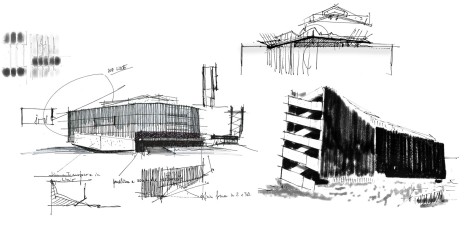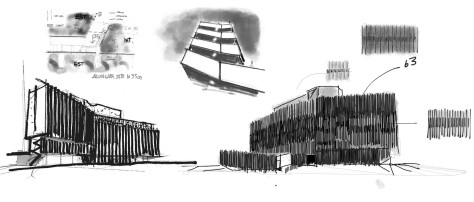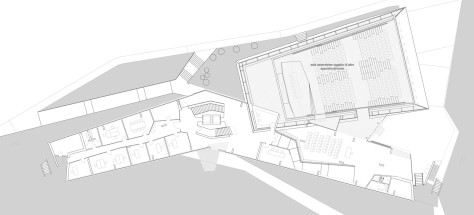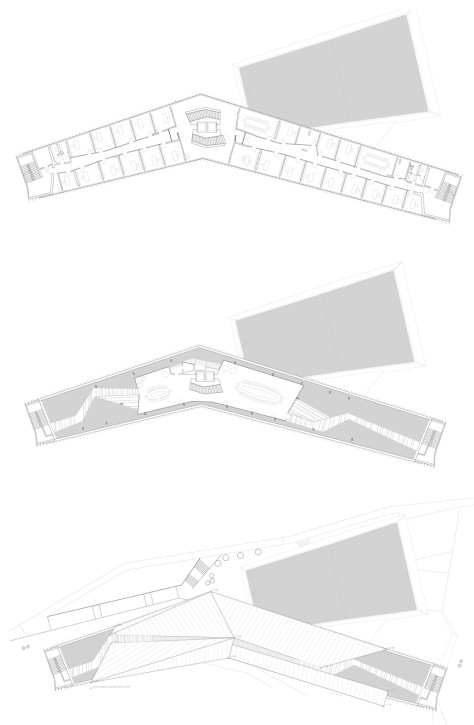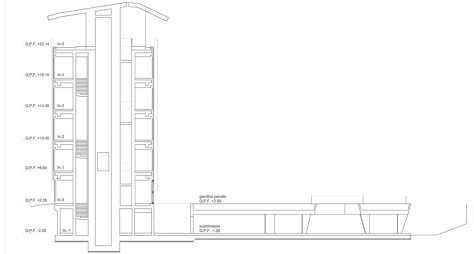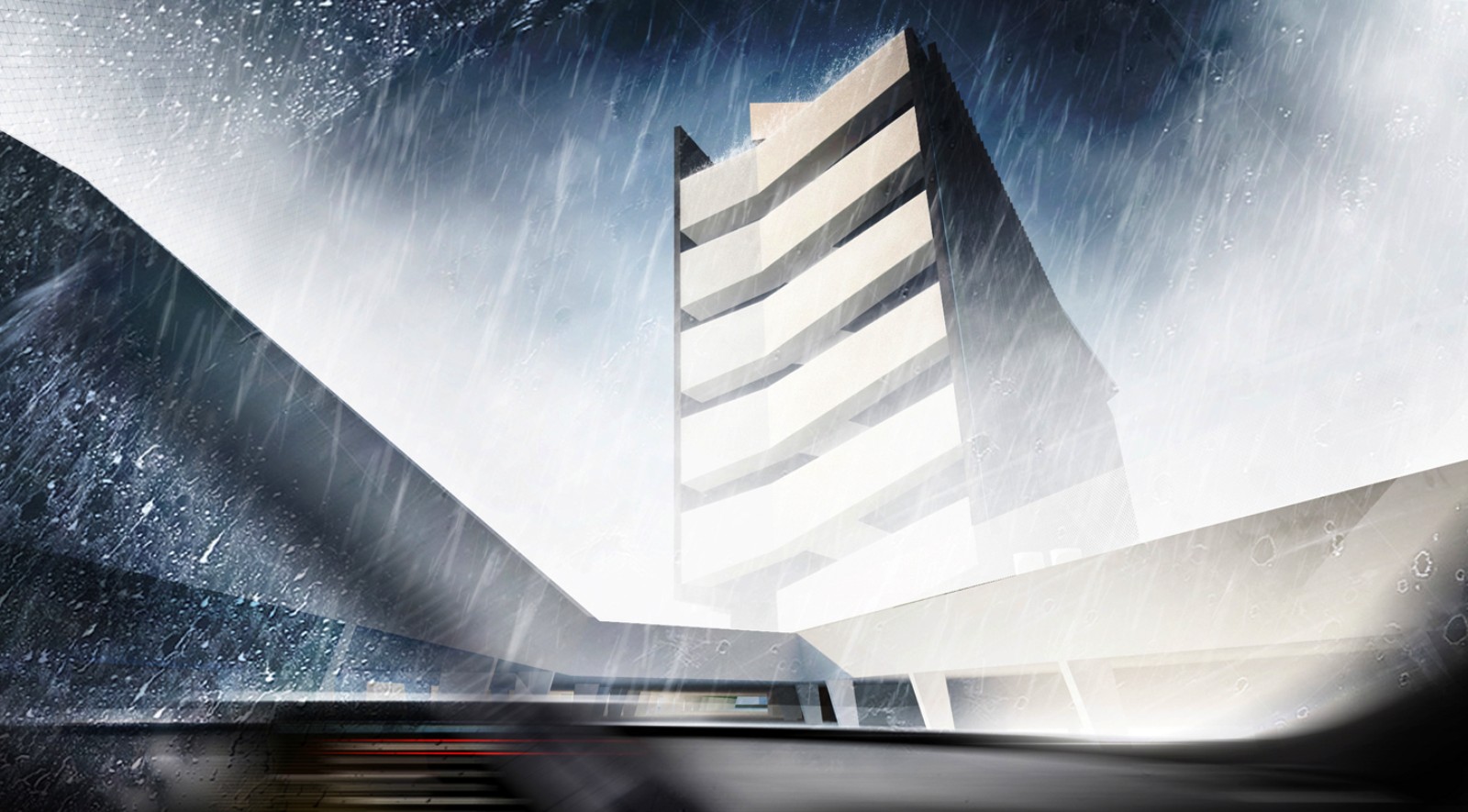
The project, with a gross floor area of 5.800 sq.m, consists of offices divided into 6 departments, a conference hall, and a key meeting room topping off the building on its rooftop terrace.

Consisting of one main segment, the office space, flanked by two others; an assembly room designed for over two hundred people and a partially covered parking space, this project was controlled by a small number but very highly articulated criteria.

Although the typology was “free,” it immediately became clear that it would need to be designed mainly in response to the criteria of functionality and efficiency.
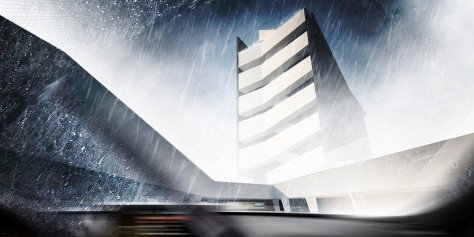
The form “butterfly,” was chosen as the best from six preliminary projects because of its response to the client’s need for ease and optimization of frequent worker movement; the formation of its asymmetrical “wings” making it possible to house and separate several services on each floor without the need to split them into multiple levels.
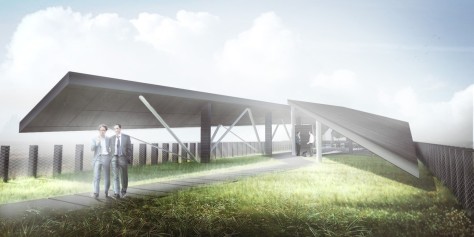
A large green expansion obscures from visitors around half of the parking, with two cutouts (corresponding to the vehicular access ramps) made in this suspended plane, allowing daylight to access almost every surface. This same green space also controls the entire building’s connection to the ground level.
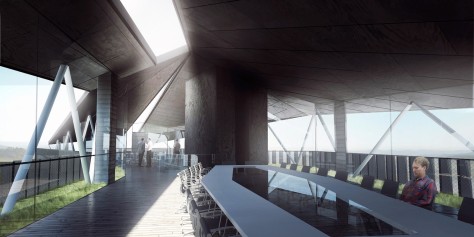
This sub-ground level is designed for service/storage and concealed by a gradually sloping mound of soil that helps to visually suspend the office building above the ground.
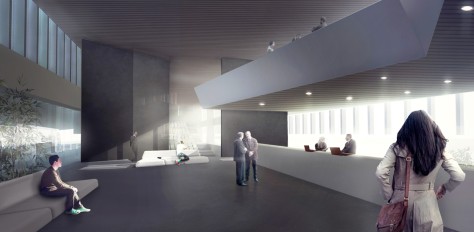
The two main access points of the office space cut along this green space from north to south and are reachable only through the slightly slanted pedestrian pathways. The north and south elevation views are composed through vertical brise-soleil approximately 35 cm deep repeated every 70 cm, which correspond to the window mullions on the continuous facade.

This repetitive design element also gives rhythm to an elevation that would otherwise become monotonous due to its extreme uninterrupted length. From the view of the two vehicular entrances, only three-quarters of the building can be perceived, causing its perception as a single united volume; a clean face hiding its complex interior.

Various other elements; a heavy, geologically sculptural conference hall which visually anchors the main office building mass to the ground; the light planar elements of floating roof above; the white “woven” ribbon stairs; the office building “wings” seemingly floating over the carefully sculpted, angular topography. What is left is a complex, dynamic, yet easily enjoyable experience. Source by Tisselli studio.

Location: Forli, Italy
Architects: Tisselli studio
Year: 2014
Gross floor area: 5,800 sq.m.
Images: Courtesy of Tisselli studio

